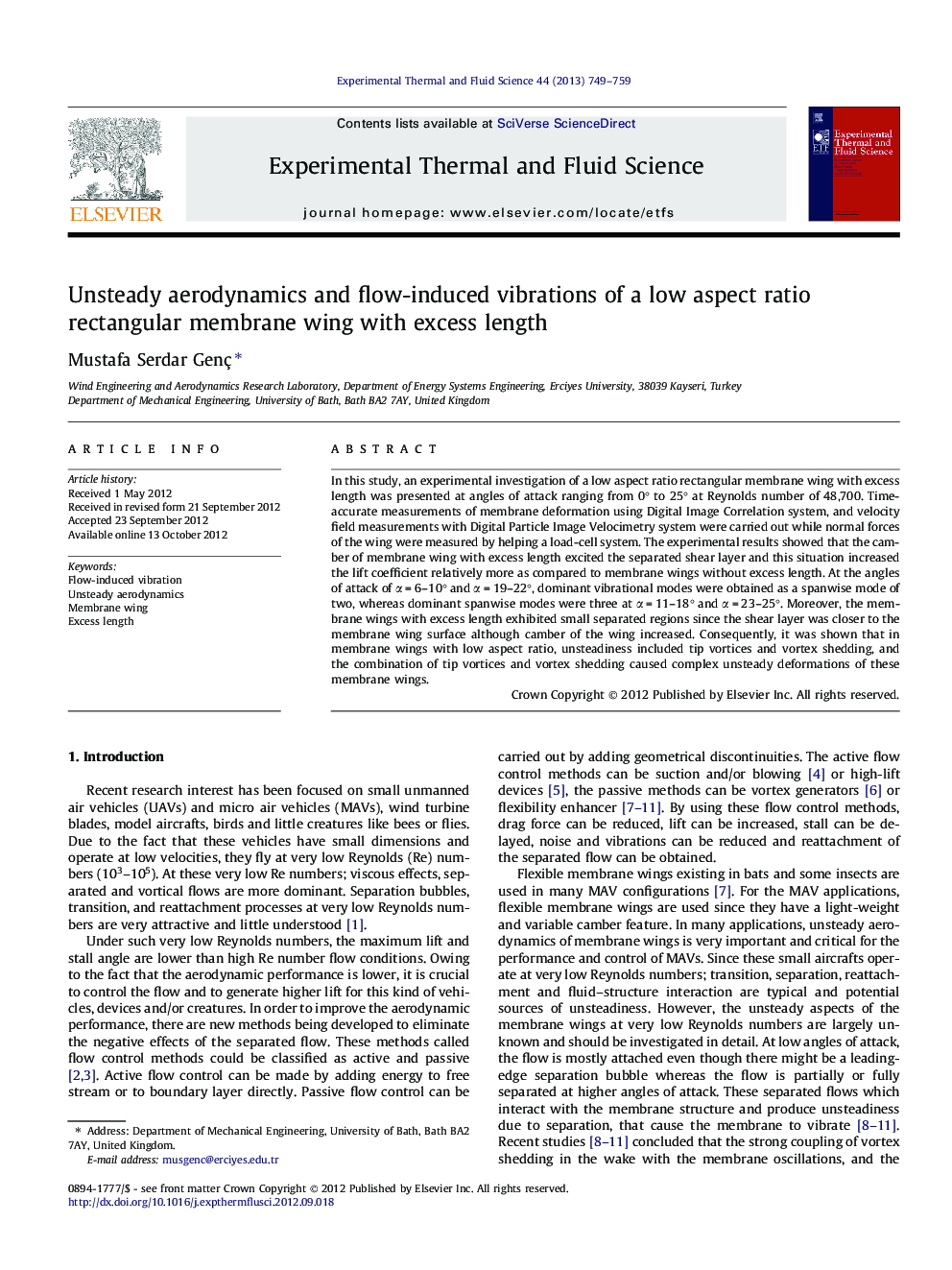| Article ID | Journal | Published Year | Pages | File Type |
|---|---|---|---|---|
| 651565 | Experimental Thermal and Fluid Science | 2013 | 11 Pages |
In this study, an experimental investigation of a low aspect ratio rectangular membrane wing with excess length was presented at angles of attack ranging from 0° to 25° at Reynolds number of 48,700. Time-accurate measurements of membrane deformation using Digital Image Correlation system, and velocity field measurements with Digital Particle Image Velocimetry system were carried out while normal forces of the wing were measured by helping a load-cell system. The experimental results showed that the camber of membrane wing with excess length excited the separated shear layer and this situation increased the lift coefficient relatively more as compared to membrane wings without excess length. At the angles of attack of α = 6–10° and α = 19–22°, dominant vibrational modes were obtained as a spanwise mode of two, whereas dominant spanwise modes were three at α = 11–18° and α = 23–25°. Moreover, the membrane wings with excess length exhibited small separated regions since the shear layer was closer to the membrane wing surface although camber of the wing increased. Consequently, it was shown that in membrane wings with low aspect ratio, unsteadiness included tip vortices and vortex shedding, and the combination of tip vortices and vortex shedding caused complex unsteady deformations of these membrane wings.
► A study of low aspect ratio membrane wing with excess length at low Reynolds number. ► Camber of membrane wing with excess length excites the separated shear layer. ► Shear layer is closer to membrane wing surface although camber of wing increases. ► Tip vortices combine with vortex shedding, which causes complex unsteady deformations. ► With increasing deformations stronger tip vortices develop, which increases the lift.
